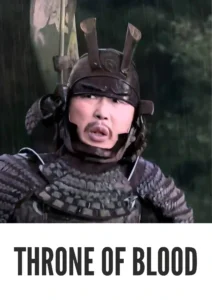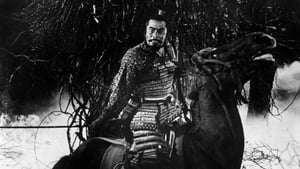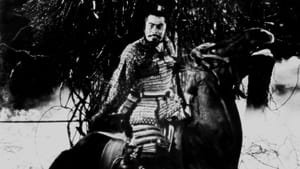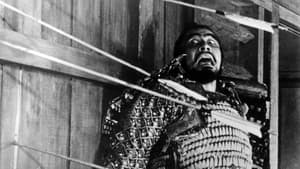Video Sources 0 Views
- Watch trailer
- Throne of Blood 1957 Colorized


Synopsis
Table of Contents
Toggle
Delve into Akira Kurosawa’s masterful adaptation of Shakespeare’s Macbeth with Throne of Blood, a 1957 cinematic triumph now brilliantly colorized to offer a fresh perspective on this timeless tale. Set in feudal Japan, this film blends samurai action with psychological drama, creating a powerful and visually stunning experience. Perfect for lovers of classic cinema, Japanese history, and Shakespearean adaptations, this HD download provides a unique opportunity to witness Kurosawa’s genius in a whole new light.
Throne of Blood tells the story of General Washizu (Toshiro Mifune) and his wife, Asaji (Isuzu Yamada), who are driven by ambition and manipulated by supernatural forces. After a spirit in the forest foretells Washizu’s rise to power, he begins to plot the murder of his lord to seize the throne.
Urged on by his ruthless wife, Washizu carries out the assassination, setting off a chain of events marked by paranoia, violence, and madness. As Washizu’s power grows, so does his fear of being overthrown, leading to further acts of betrayal and bloodshed. The film culminates in a tragic downfall, as Washizu faces the consequences of his actions and succumbs to the forces he sought to control. Throne of Blood is a gripping and visually stunning exploration of ambition, fate, and the corrupting influence of power.
The film features a stellar cast of actors who bring this epic tale to life:
-
Toshiro Mifune as General Washizu
-
Isuzu Yamada as Asaji, Washizu’s wife
-
Takashi Shimura as Noriyasu Odagura
-
Akira Kubo as Yoshiteru Miki
-
Minoru Chiaki as General Miki
Throne of Blood is a samurai drama epic, blending elements of historical drama, action, and psychological thriller. Its themes of ambition, betrayal, and fate are universal, making it a compelling and thought-provoking film.
Released in 1957, Throne of Blood stands as a landmark achievement in Akira Kurosawa’s distinguished career, demonstrating his mastery of visual storytelling, character development, and thematic depth. The film was produced during a golden age of Japanese cinema when directors like Kurosawa were gaining international acclaim for their innovative and culturally rich works. Throne of Blood not only adapts Shakespeare’s Macbeth but also incorporates elements of Noh theater and Japanese folklore, creating a unique and powerful cinematic experience.
This colorized version of Throne of Blood has been meticulously restored using advanced digital techniques, enhancing the visual impact while preserving the film’s original atmosphere of tragedy and suspense. The colorization process involved carefully analyzing the grayscale tones of the original black and white footage and assigning appropriate colors to each scene to enhance the costumes, landscapes, and emotional tones. This painstaking process brings new depth and richness to the characters and settings, making the story even more captivating for modern audiences.
-
: Akira Kurosawa
-
: Akira Kurosawa, Shinobu Hashimoto, Hideo Oguni, Ryūzō Kikushima
-
: Macbeth by William Shakespeare
-
: Asakazu Nakai
-
: Akira Kurosawa
-
: Toho
-
: Toho
-
: 110 minutes
-
: MP4
-
: HD (1080p)
-
: Compatible with most devices, including smartphones, tablets, computers, and smart TVs.
Throne of Blood is widely regarded as one of Akira Kurosawa’s greatest films and a masterpiece of world cinema. Its stunning visuals, powerful performances, and thematic depth have earned it critical acclaim and a lasting legacy. As a visually striking and emotionally resonant adaptation of Shakespeare’s Macbeth, Throne of Blood continues to captivate and inspire audiences around the world.
-
: What is Throne of Blood about?
-
A: Throne of Blood is an adaptation of Shakespeare’s Macbeth set in feudal Japan, telling the story of a samurai warrior who plots to murder his lord and seize the throne.
-
-
: Is Throne of Blood (1957) a well-known Kurosawa film?
-
A: Yes, Throne of Blood is one of Kurosawa’s most famous and critically acclaimed works, considered a masterpiece of Japanese cinema.
-
-
: Is this version of Throne of Blood colorized?
-
A: Yes, this version has been professionally colorized to enhance the viewing experience.
-
-
: What makes Throne of Blood interesting for Kurosawa fans?
-
A: Throne of Blood showcases Kurosawa’s unique blend of Japanese culture, Shakespearean drama, and cinematic innovation.
-
-
: What is the download format?
-
A: The download format is MP4, which is compatible with most devices.
-
-
: What resolution is the download?
-
A: The resolution is HD (1080p), providing a high-quality viewing experience.
-
Watch Throne of Blood Today!













